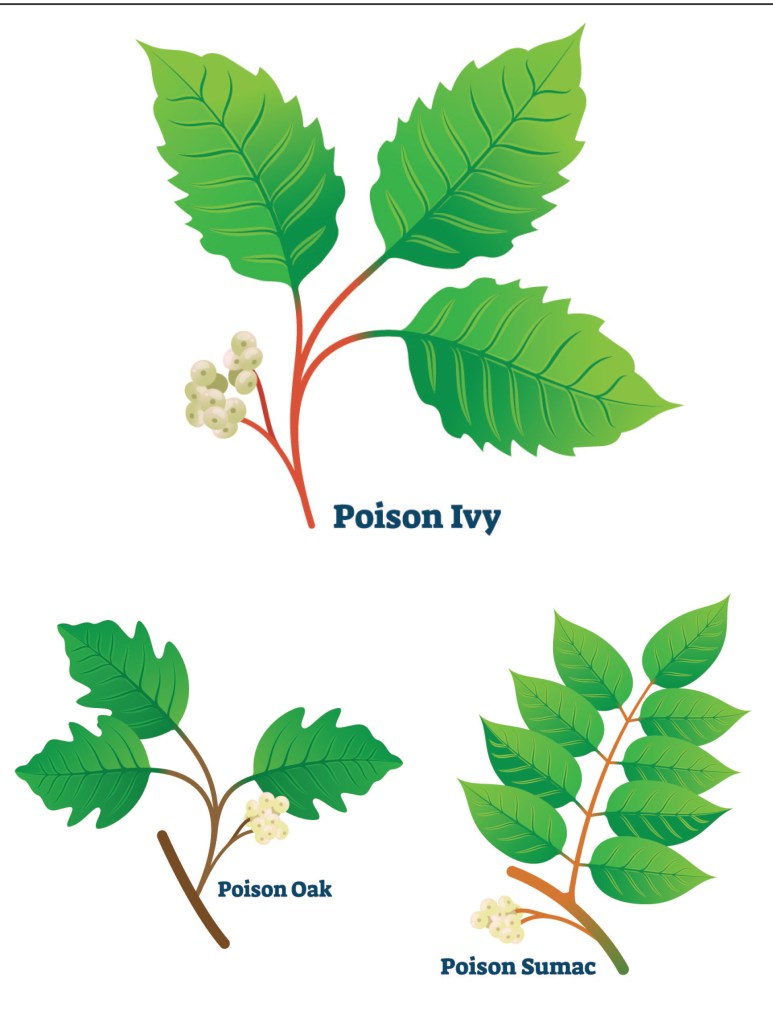ONE GARDENER TO ANOTHER: How to identify and treat poison ivy, oak and sumac
Published 7:00 am Monday, April 6, 2020

- Poison oak
Shortly after moving into my home in Georgia, I noticed some thick, hairy vines growing up the trunks of a few of my trees. I thought they were dreadful looking, so I grabbed my gloves and pruners and headed out to remove the ugly beasts. I cut and yanked on them until my trees were free of them.
My son, then 5 years old, was walking around the island with a branch, holding it like a divining rod, pointing at various vines and warning “don’t touch, poison ivy,” which I thought was funny at the time. Long story short, eight weeks and multiple antibiotics and topical ointments later, I stopped itching and knew exactly what poison ivy looked like. I also learned a few rhymes that help me identify poison ivy, not that I would ever forget.
Trending
Leaves of three, let it be.
Berries white, run in fright.
Hairy vine, no friend of mine.
These easy-to-remember lines are the tell-tale signs you are dealing with poison ivy.
Poison ivy leaves always grow in groups of three. Other plants, such as raspberries and blackberries, also have three leaves, but they also have thorns, which will never appear on poison ivy.
The middle leaflet of poison ivy is situated on a long stem, while the side leaflets are on much shorter stems protruding from the longer one. The leaflets are pointy at the tip, and sometimes one of the side leaflets will have an indentation giving it the appearance of a mitten. Leaves are shiny and smooth. Although green in summer, leaves turn a reddish-orange in fall and are shades of red and orange in spring.
Trending
Poison ivy can grow as a bush or as either a climbing or trailing vine. Bushes grow to a height of about 4 feet, trailing vines grow to about 4 inches and climbing vines, using trees or fences as support, can grow to 100 feet.
Bushes grow pale, green berries in summer that turn waxy and white by fall. The leaves will also fall around that time, however, the berries stay year-round. Birds and other woodland animals, such as rabbits, deer and squirrels, are able to consume the berries without harm. For humans, pain and swelling of the lips, tongue, face and skin are caused by needle-like crystals contained in the berries.
The leaves, stems and roots of poison ivy all contain a clear liquid called urushiol that is in the plant’s sap. It is the cause of the itchy rash associated with touching poison ivy. This itch-inducing compound can be easily transmitted by direct contact or by touching items, such as clothing, tools or shoes that had direct contact with the plant.
Although not affected by poison ivy because their fur acts as a safeguard for their skin, dogs and cats who get into a patch of poison ivy can spread urushiol to whatever they brush against. It is wise to give your pet a nice bath before they go back into your home after having contact.
Poison oak has the same characteristics as poison ivy, however, the leaves resemble oak leaves, they are a duller green with a rougher surface, and the leaflets have hairs on both sides, unlike poison ivy.
Poison sumac generally has between seven and 13 leaflets. It can grow as a shrub or tree and is found in wet, marshy areas rather than wooded areas. Non-poisonous sumac, such as staghorn and smooth sumac, grow in drier locations.
Prevention, treatment
The best defense against poison ivy is prevention. Long pants, sleeves, gloves and boots can protect the skin when gardening or hiking. Be mindful not to touch your face with gloved hands that have come in contact with the plant. You should seek medical attention if you have severe swelling, fever or difficulty breathing or swallowing.
If you come in contact with poison ivy, oak or sumac, wash the area with a mild soap and water. Calamine lotions, cool compresses or a paste of baking soda and water applied to the infected area can help alleviate itching.
I believe the earth holds all the secrets and produces plants that are meant to heal. In this case, jewelweed, also know as touch-me-not, is the answer. The leaves and stems of this plant can be crushed and the juices applied to the skin as a preventative measure against the poison.
Knowing how to identify these plants will go a long way in preventing a miserable itchy episode. Until next week, happy gardening.
— Irland, a member of the Limestone County Master Gardeners, can be reached at kippirland@hotmail.com. Visit http://mg.aces.edu/limestone for more information on the Limestone County Master Gardeners.





